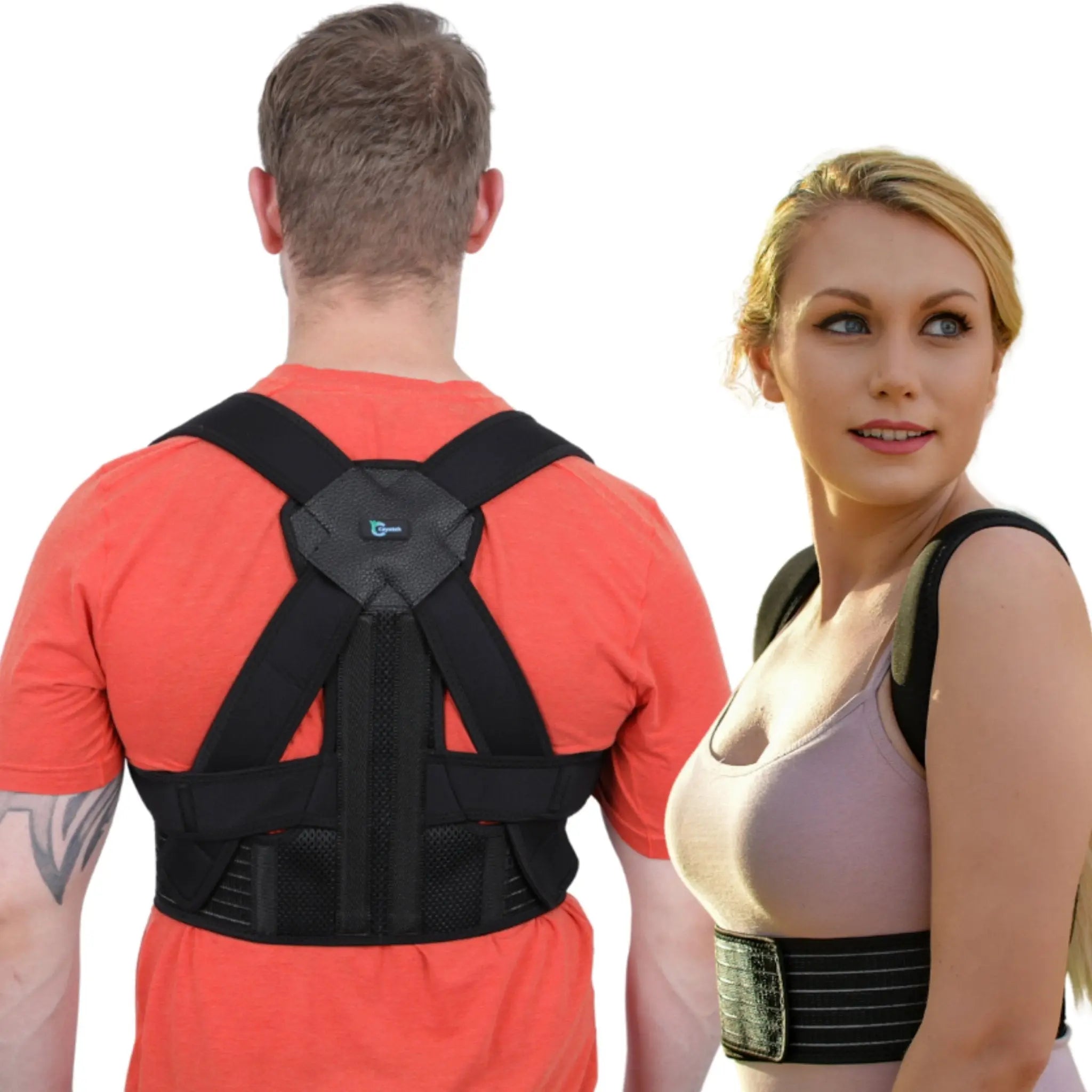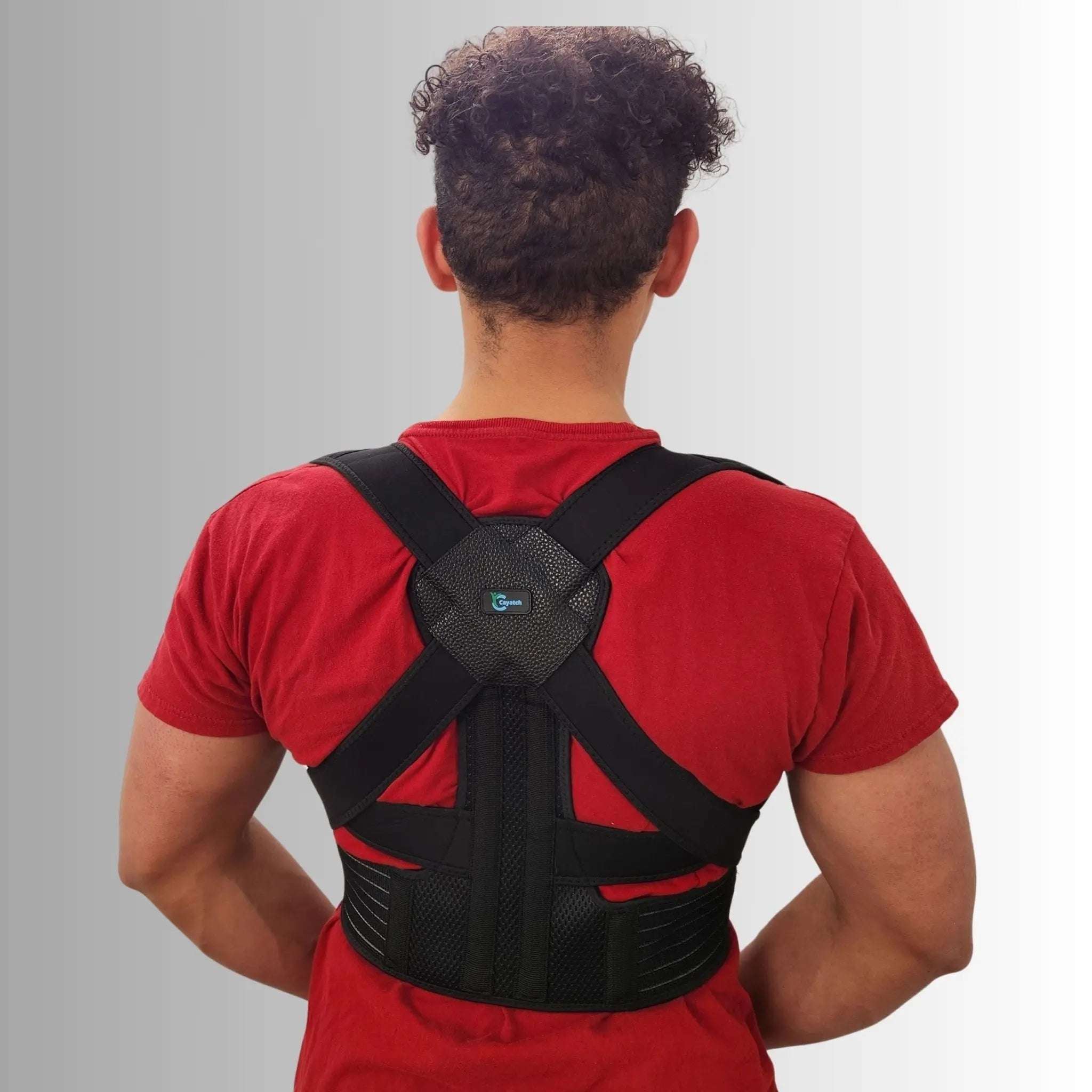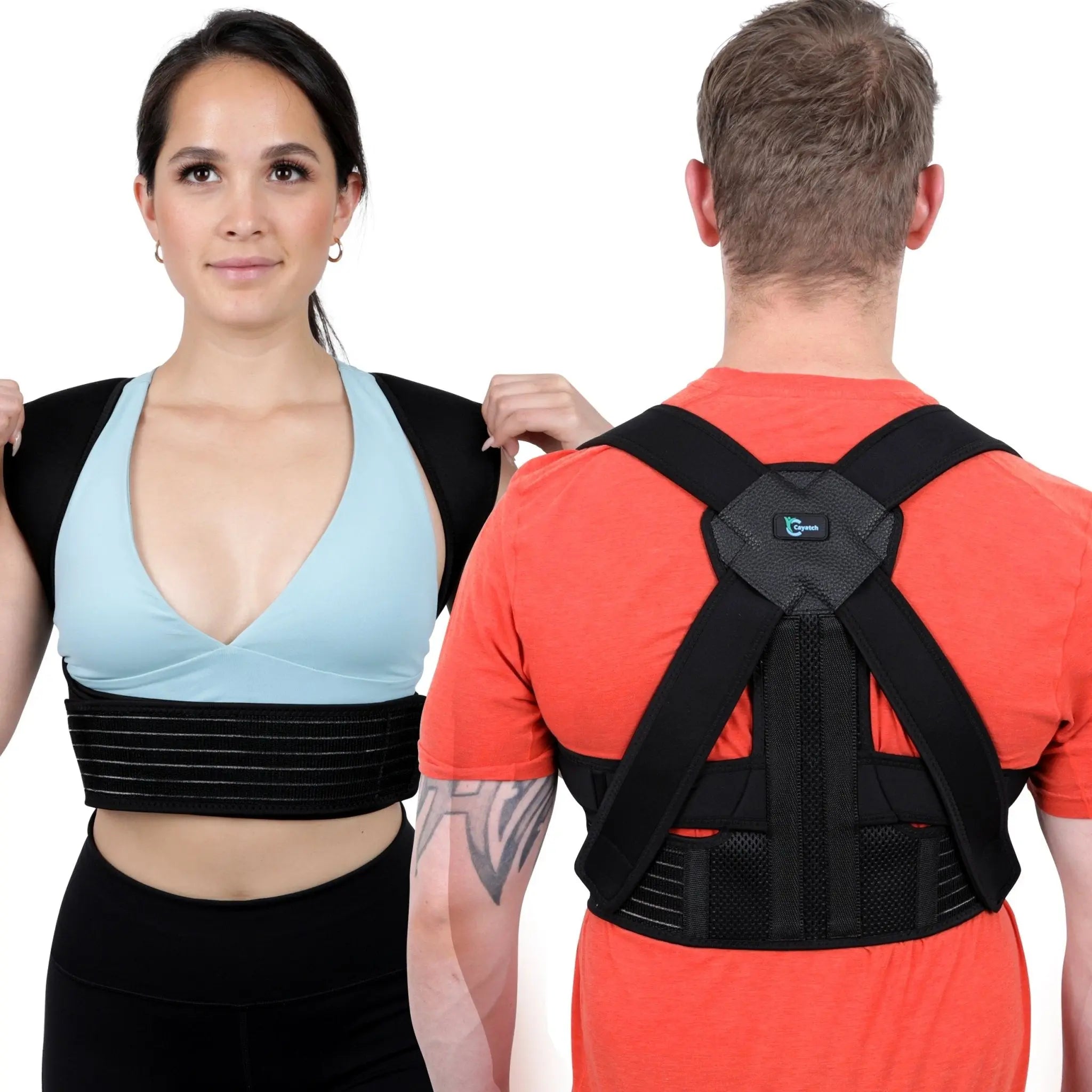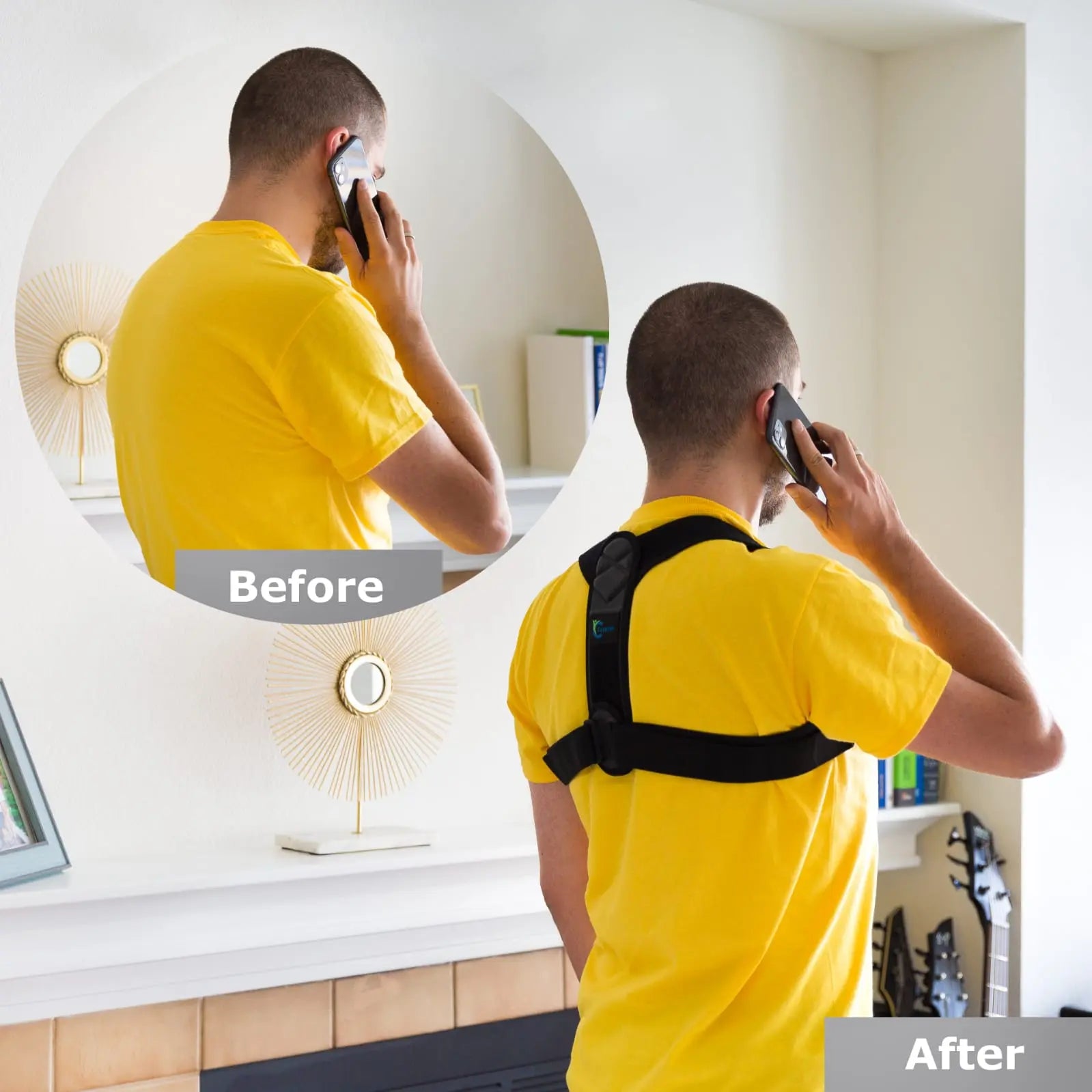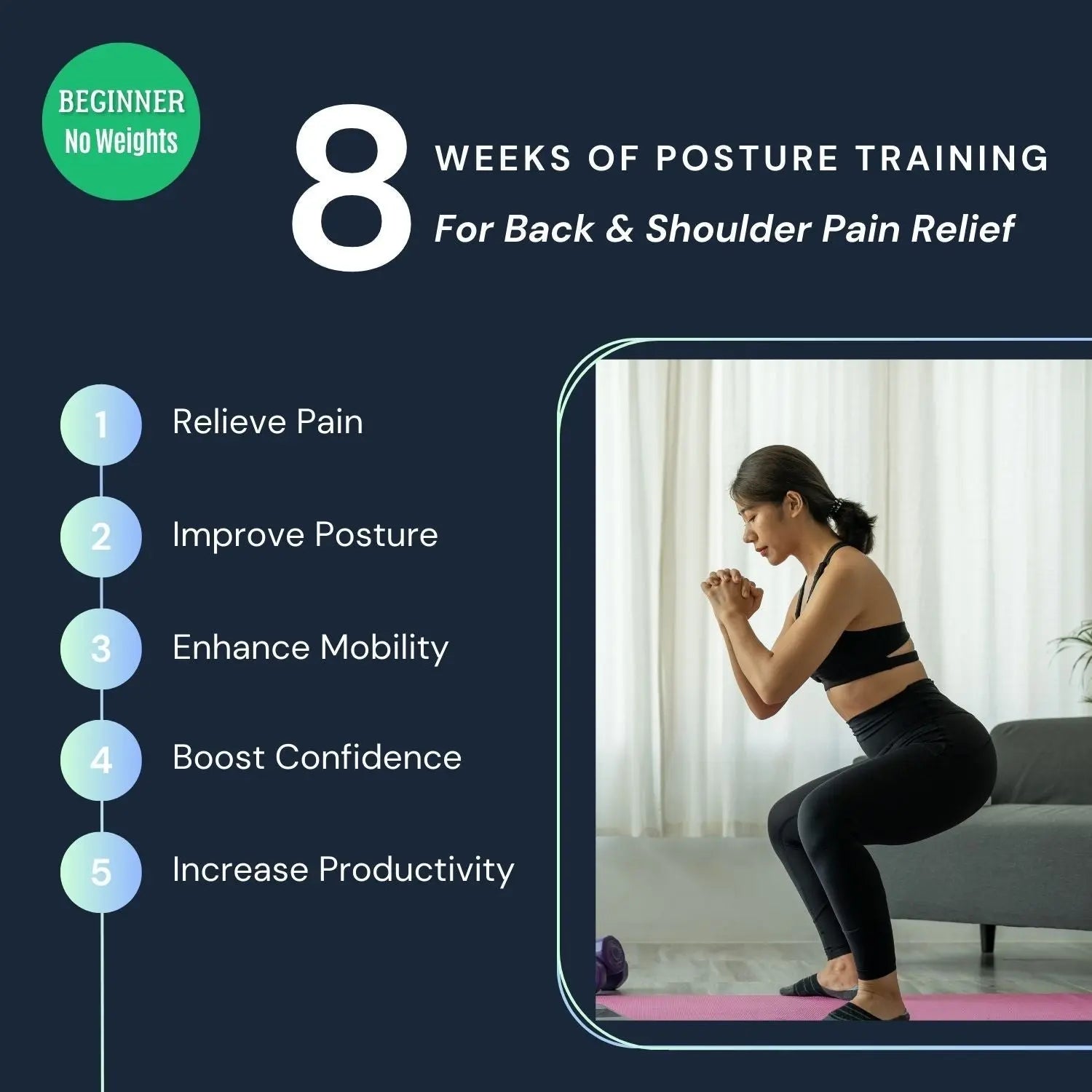How To Get The Proper Driving Posture Support | Why Do You Need It?

Lower back discomfort, tense arms and shoulders, and achy upper legs from prolonged sitting is common among drivers. To minimize these aches and pains during driving, improving your driving posture is crucial. So, what is proper driving posture practices?
Straight sit-up, car seat and steering wheel adjustment, taking breaks, stretch, etc. are essential measures to address these issues. Continue reading to learn the importance of proper driving posture. Also, we mentioned 8 tips, helping you improve your posture during driving.
Why Is Your Proper Driving Posture Important?

Maintaining proper body posture during driving ensures a comfortable journey. Moreover, it contributes to better road safety by minimizing the risk of accidents.
Experiencing an achy back, stiff neck, and sore shoulders is an expected outcome of the daily shakes, rattles, and rolls of driving.
The vehicles we use contribute to this issue. Some car seats fail to adequately support the lower back curve, adding strain on the spine.
Particularly, legroom and head space are limited in compact cars. As a result, drivers have to drive the vehicle with poor positions.
Dr. Ginger Edgecombe Dorsey, Ph.D., the Ergonomics Program Manager for the USDA Animal and Plant Health Inspection Service (APHIS), suggests, "It's not solely the car's fault; improper sitting habits also play a role.”
In her ongoing poll of USDA employees, she notes that poor driving posture increases the risk of discomfort in various body parts, including:
- Neck
- Back
- Shoulders
- Arms
- Wrists
- Fingers
- Legs
- Feet
Over time, this could lead to chronic pain, making individuals more susceptible to injuries.
Moreover, poorly positioned drivers face the risk of serious injury in accidents.
Fortunately, posture-related discomforts can be fixed by adjusting the driver's seat and mirrors.
It means good posture is beneficial. Good posture helps reduce stress on your body. Also, you will have improved visibility during driving.
- Improved Visibility: Maintaining a proper driving posture ensures an unobstructed view of the road, surroundings, and mirrors. It improves overall situational awareness and minimizes blind spots, contributing to safer navigation.
- Reduced Stress in Body Parts: Good posture distributes the stress on muscles and joints evenly. Thus, good posture prevents pressure on specific body parts such as the back, neck, and shoulders. You will barely experience discomfort, pain.
- Enhanced Comfort: A well-supported and aligned body position promotes comfort during extended periods of driving. It is particularly important for long journeys, as good posture minimizes fatigue and discomfort. Proper posture lets you enjoy a pleasant driving experience.
- Increased Alertness: Proper posture supports optimal blood circulation and oxygen flow, helping you stay alert and focused on the road. This improves attentiveness. So, making quick decision and response to potential hazards on the road becomes easy.
- Prevention of Injuries: Maintaining good posture can significantly reduce the risk of injuries in a collision. Proper alignment supports the body's natural curves, providing better protection during accidents.
- Increased Energy: Inadequate posture has the potential to reduce energy levels, leading to fatigue. Proper body alignment can assist in sustaining focus during driving. It means, maintaining the correct posture helps you to perform the daily tasks with greater energy.
8 Tips to Achieve the Proper Driving Posture

By now you already understood that good posture while driving is important as it offers many benefits.
So, how to achieve it? Here are 8 tips to follow.
Tip 01 – Adjust Your Seat
To achieve optimal comfort and posture while driving, start by adjusting your car seat. Here are a few tips.
- Ensure your seat is at a height where your hips are level with or slightly above your knees.
- Maintain a comfortable distance from the steering wheel, allowing a slight bend in your elbows.
- Position the seat close enough to the pedals for easy access. It ensures your knees remain slightly bent when pressing them.
- Position your car seat at an appropriate distance from the steering wheel to promote proper posture.
Required seat adjustments promote proper spinal alignment, reducing strain and discomfort. Maintaining the right seat height facilitates control and responsiveness. So, you will have a safer and more comfortable driving experience.
Tip 02 – Adjust Your Steering Wheel
Adjust the steering wheel with its center aligning with your neck's height for optimal driving experience.
Flex your arms and place your hands in a quarter-to-three position, maintaining a 90° angle in your elbows.
Avoid stretching your arms fully when placing your hands at 12 o'clock. Remember consistent hand placement on the wheel is vital. Keep the hands in the recommended quarter-to-three position for easy maneuvering.
Such a setup ensures comfort, control, and responsiveness on the wheel.
Tip 03 – Sit Up Straight
Maintain an upright position and avoid hunching towards the steering wheel to prevent potential neck issues. It reduces the risk of injury during airbag deployment. Similarly, avoid excessive leaning back to prevent added pressure on the spine.
Keep 10”-12” distance between the steering wheel and the breastbone. While maintaining the distance, be mindful of your height and body type.
You will have optimal comfort and safety by having straight sit up. Moreover, you will have improved self-esteem and mood.
Tip 04 – Keep Your Feet Flat on the Floor
Ensure your feet are flat on the floor. For optimal control, position the right foot to move effortlessly between the accelerator and brake pedals.
Then, place the heel roughly in front of the brake pedal. When not using the clutch, rest the left foot on the footrest to support the pelvis and back.
Tip 05 – Use a Lumbar Support
Ensuring necessary lower back support while sitting is crucial. Insufficient support stresses soft tissue and spinal joints, potentially leading to back pain.
Wondering, how to ensure proper lumbar support? If you are a modern car owner, I have good news.
Many modern car seats include a concealed lumbar support mechanism. To activate this feature:
- Check for an extra switch on your driver's seat.
- Adjust the switch until your lower back is fully supported, enhancing comfort.
- In the absence of built-in lumbar support, improvise using a rolled-up towel or invest in a lumbar support accessory designed for standard car seats.
Prioritizing lower back support contributes to a more ergonomic and pain-free driving experience.
What if you don’t have modern cars?
Worry-less!
Use cushion as a lumbar support and enjoy the ride.
Tip 06 – Adjust Your Mirrors
After ensuring proper lumbar support, fine-tune the mirrors for optimal rear visibility. This adjustment is critical for both driving performance and posture maintenance.
Once adjusted, if you find that the mirrors are no longer offering rear visibility, it likely indicates a shift in your posture.
In such instances, promptly correct your posture and return to a straight, upright sitting position.
Consistent attention to mirror adjustments ensures driving awareness. At the same time, it serves as a valuable indicator for sustaining good posture throughout your journey.
Tip 07 – Take Breaks

Whenever feasible, take a break every 20 minutes of driving. Additionally, avoid continuous driving for more than 2 hours to prevent stiffness and other physical issues.
Regular intervals and maintaining the recommended driving posture contribute to a relaxed and comfortable driving experience.
Tip 08 - Stretch
Extended hours on the road can lead to discomfort regardless of the drivers’ experience.
Fortunately, drivers can incorporate safe stretches to reduce pain and stiffness. While driving, consider the below stretches for discomfort and maintain focus:
- Gentle Side-to-Side Neck Tilts: Ease neck and shoulder pain with these subtle tilts.
- Shoulder Shrugs with Slow, Rolling Motions: Stretch your shoulders and upper back through deliberate, rolling shoulder shrugs.
- Back Arches: Extend your entire back with back arches.
Step out for a walk to improve blood circulation and reduce stiffness. Minor aches can be distracting, posing a danger on the road.
So, incorporating simple stretches aids in maintaining attention. Furthermore, these stretches alleviate stress from congested commutes and aggressive drivers.
Frequently Asked Questions (FAQs)
What is the best posture for driving car?
While driving a car, you need to sit straight with adequate support. Make sure that your shoulders are relaxed and you can reach the steering wheel easily without hunching over.
Is lumbar support good for driving?
Lumbar supports allow you to drive comfortably while ensuring the perfect alignment of your back, neck, and lower body while driving.
It ensures your upright position so you don’t get into an unnatural alignment. Lumbar support is extra beneficial when you want to improve your posture.
Does posture affect driving?
Yes, your posture can affect your driving in many ways. Good posture allows you to remain in a safe position where you will be less likely to be injured even if you face an accident.
Besides, you can get better visibility when driving.
The Bottom Line
Maintaining proper driving posture is vital for drivers. It should be addressed to avoid the bad posture effects, especially in our cars. Remember, prioritizing good driving posture enhances immediate safety and accident prevention.
Over time, the benefits of proper standing and sitting postures shield against issues like misaligned joints and pinched nerves. Follow the above tips and avoid slouching for a comfortable and safe driving experience with health benefits.























